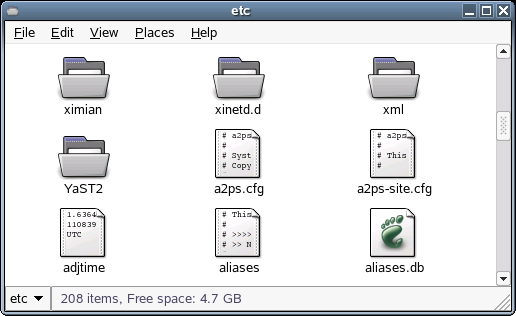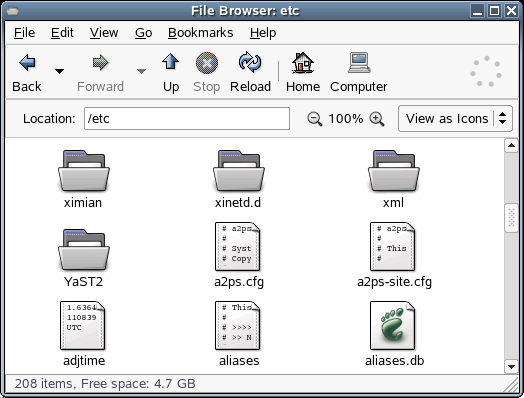2.4 Managing Folders and Files with File Manager
The File Manager program included with NLD is Nautilus. Using File Manager, you can create and view folders and documents, run scripts, and create CDs of your data. In addition, File Manager provides support for Web and file viewing.
Figure 14 Nautilus File Manager

You can open File Manager in the following ways:
- Click
- Click the icon on the desktop
- Click the username Home icon on the desktop
File Manager runs in object-oriented or spatial mode by default, similar to the early Macintosh Finder*. When you click a folder in spatial mode, a window for that folder opens. If you click the folder again, the opened folder is brought into focus. This one-to-one relationship is closer to the way you work with objects around you, like desks, chairs, and tables. However, spatial mode might be awkward for those that are use to a file manager like Windows Explorer, which uses a browser mode.
Figure 15 Nautilus File Manager in Browser Mode

You can change to the browser mode by right-clicking the folder and then clicking . This gives you a familiar view with a location window that shows the current path and buttons for common functions. This applies to the current File Manager window.
You can change the preferences for files and folders in File Manager by clicking , then selecting from the following options:
Table 3 File Manager Options
Some simple shortcuts for navigating include the following:
Table 4 File Manager Navigation Shortcuts
For more information, click on the File Manager menu bar.